History of Dulcimers
If you really want to know about Dulcimers in the UK. The best source
is David Kettlewell's website. David Kettlewell's doctoral thesis was
'The Dulcimer' (1976, now with updates!) It's so good remember to come back here afterwards. It also has lots of pictures of old Dulcimers.
Compared to David Kettlewell the information presented here is
insignificant and academically, probably completely flawed. All I do is
make the things and I've learned a few bits and pieces along the way.
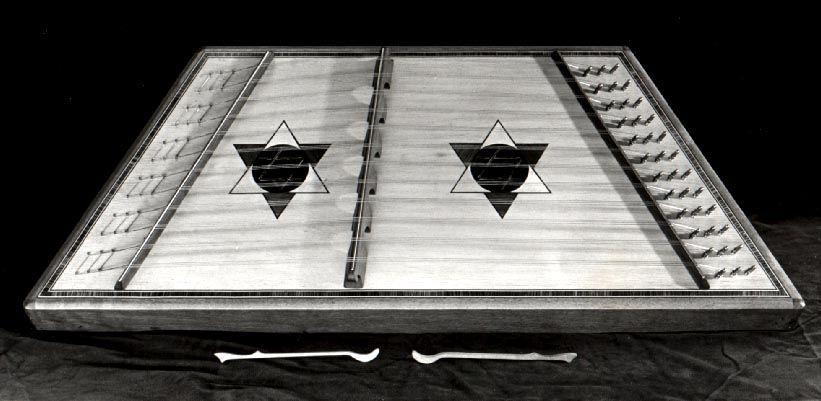
Above - One of my earliest dulcimers.
My understanding is that the invention of the Dulcimer is usually attributed to the Ancient Persians whose empire included some areas now occupied by Turkey, Iran, Iraq and Afghanistan. Of course we cannot be very clear but it seems to have come from somewhere in that area. The earliest visual representation of a Dulcimer is in a 12th century manuscript made in Byzantium. The instrument was introduced into Western Europe in the 15th century. Because of the versatility of the instrument, it's ease of adaptation to different musical scales, its portability, and the explosion of travel. it spread to many different cultures and became a very popular instrument throughout many areas of the world.
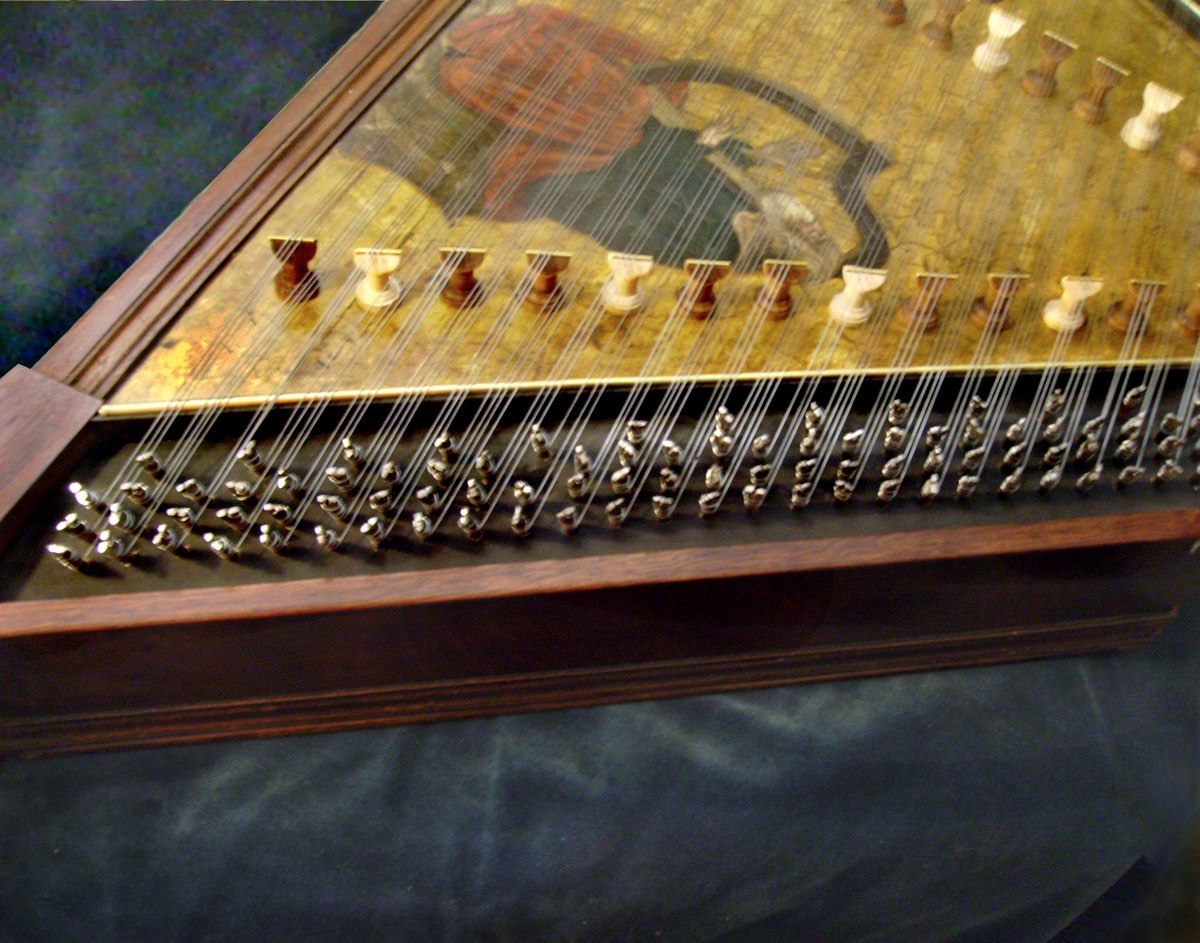
Above - I restored this late 17th or early 18th century in about 2010.
The Hammer Dulcimer is a member of
the Zither family of instruments, instruments having strings stretched
over a box type frame but without a keyboard. Other members of the
Zither family are Psaltery, Auto-harp, Qanun(North Africa) and Koto
(Japan).
Nomenclature
The name Dulcimer comes from Greek and
Latin dulce-melos meaning sweet sound but this name for the instrument
is only used in English speaking countries. Interestingly, in Greece the
word Santuri, (the instrument played by Zorba, in the book 'Zorba the
Greek') is apparently related to the Ancient Greek word psallo (to
pluck). In Iran the name of instrument is Santur >and in India,
Santoor, (same name different spelling). Yang-chin meaning foreign
string instrument) is used in China, in Central Europe, Hungary Etc.,
Cimbalom and derivatives of that name are used. In Germany the
instrument is named Hackbrett which is also the name for a
butchers chopping board, the look of someone playing a Hackbrett
resembles someone, chopping at a chopping board.
Dulcimer type instruments exist in many
areas of the world and more often than not consist of a trapezoid box with strings stretched over, in courses (sets) of 2 to 6 and are usually divided by a bridge.
The bridge splits the strings into two portions, on some instruments
both sides of both bridges are playable, although more usually, the left
(or treble) bridge is playable both sides. The Bass bridge is played
to the left, and to the right side of this bridge are a set of
unplayable notes, because they are often out of tune with the
instrument.
The essential difference between Dulcimers
of different countries is the way the instruments are made and tuned,
this combination is what gives each member of the family a different
voice. While this is true, it is also possible with minor amendments to
technique and minimal adjustments to the instrument to create passable
attempts at sounding culturally different.
In this country, at this time, the interval between
the left and right portions of the strings passing over the treble bridge is
usually a fifth. In other countries they may be tuned anything between a
semitone and an octave apart. The bass strings passing over the bass bridge are usually only played on the left side. On Music Magic Dulcimers, the
bass bridge can be played both sides, the interval across the bridge
being two octaves. The lower note on the left and the higher on the right. The advantage of this is that the sympathetic
vibrations from the right side of the bridge are in harmony with the pitch of the fundamental note. This gives the bass notes more clarity than on traditional dulcimers, which can often sound quite 'coloured' from the inharmonicity of the notes to the right of the bass bridge being musically at best randomly related. Previously, these strings had
sounded, high pitched, slightly random notes that were only useful for
special effects! Now they can be used to fill out accompaniments or simply to extend the range of the instrument.
On Dulcimers, the treble bridge is on the
left of centre, the bass bridge on the right. The lowest sounding
strings, the bass strings, are the longest and they are those to the left of the bass bridge, which is the one on the right. The next highest are to the right of the treble bridge and then the left of the treble bridge. Strings
pass over one bridge and under the other. The usual method of playing is
to hit the strings with small wooden sticks. These are the hammers. A
variety of different hammering techniques, like drumming techniques are used
to produce chords, arpeggios, rolls and single notes. Non traditional
techniques, such as brushing the instrument with things, or plucking the
strings with the fingers, or a plectrum, can produce interesting and
pleasing results.

The name Dulcimer
(sweet sound) could feasibly be applied to any musical instruments,
although perhaps on reflection not a Digeridoo. Over time confusion
has arisen. A completely unrelated instrument which is played by
strumming the strings has unfortunately, and confusingly, also acquired
the name Dulcimer! This other Dulcimer imposter is really a
development from the French and Belgian instruments Eppinett des Vosges.
Other similar instruments exist which were originally of Northern
European origin. To avoid confusion this other instrument is usually
given a prefix such as â€ËœMountainâ€â„¢ or â€ËœAppalachianâ€â„¢.
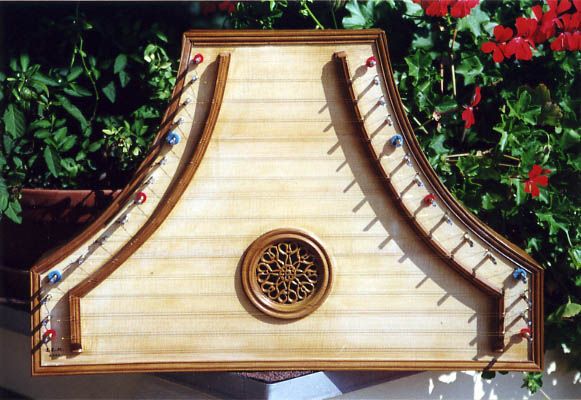
The Psaltery, an instrument designed for plucking had become the instrument upon which the Harpsichord was based. When the keys of the keyboard are depressed a mechanism automatically plucks the strings allowing very full chords, and contributing to the development of the keyboard layout. Unfortunately, this method of note production did not allow for an expressive instrument like the Dulcimer. Of course composers and instrument makers did their best to overcome the lack of expression in the Harpsichord but eventually the piano became the most important instrument in the history of music.
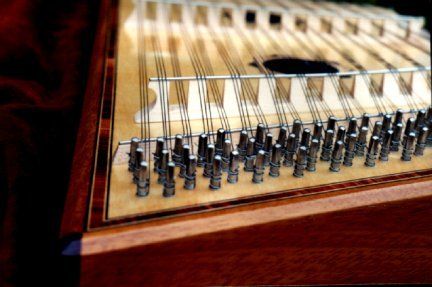
F Schröter the inventor of the early piano
was a friend of Pantaleon Hebenstreit who designed a large Dulcimer
(and whose name Pantaleon was given to that particular instrument).
Pantaleons instrument had very long, and wound, bass strings. The
general effect of the size on the instrument coupled with the long
strings must have produced a very full sounding instrument. J F
Schröter's greatest achievement was in designing a key mechanism that
struck the strings like a Dulcimer and had a damping mechanism that
prevented all the strings sound sympathetically. Schroter cited
Pantaleon Hebenstreit as his influence for his Pianoforte. The name
Pianoforte (quiet, loud) shows what an effect the instrument had on
music making, and expression, the ability to play loud and quiet must
surely be one of the most important elements in music making.
The Piano became such a successful
instrument that its forbear the Dulcimer became very much a forgotten
instrument. In fact, in England today surprisingly few people are even
aware of the instrument, despite the fact that the sound of the dulcimer
is still around them. The instruments are used frequently on television
adverts and in background music for television plays and films. My ears
are probably highly sensitively tuned to pick up the sound of dulcimer
family, but I am constantly surprised at the frequency of use of
Dulcimers when the general awareness of the instrument is so low. People
alway seem to be so enthralled when they watch a Dulcimer Player.
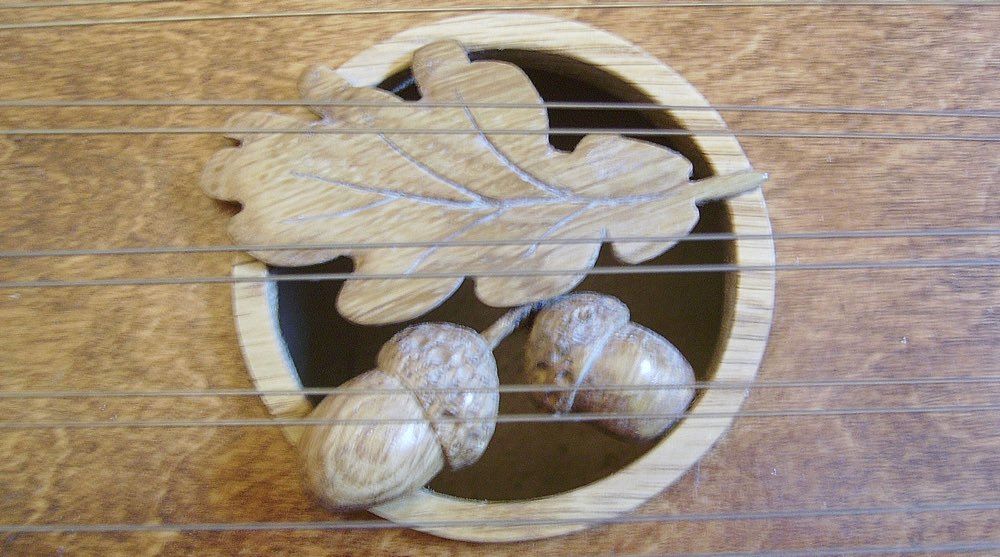
Certain areas of the world still retain the
Dulcimer as a very popular instrument, in particular Iran where there
are daily broadcasts of Santur Classical music. In India, the Santoor
player Shiv Kumar Sharmer led the way to classical acceptance for the
instrument. whereas previously it had only been regarded as a Folk
instrument. His method of playing allowed the instrument to be played in
the classical style. He uses the instrument to play Ragas; where, in
the tradition of Indian Classical music the instrument imitates the
human voice.
In Indian pop music the instrument is
used frequently alongside other modern sounds. The instrument has also
been popular with film composers such as John Barry and Lalo Schrifrin
for use in TV and Film music scores. I think my first experience of the
Dulcimer was its use in John Barry's theme tune to the 70's TV drama 'The
Persuaders'. I have also heard Dulcimer family sounds used by Rap and Hip-Hop
musicians as diverse as Dr. Dre and The Herbaliser. Pop musicians are often trying to find different sounds Pop diva
Britney Spears has used dulcimers and Trip Hop pioneers Portishead from Bristol had a huge
hit with what was essentially a simple Cimbalom (Eastern European dulcimer) sample. The sample came from Lalo Schrifrin, film composers use of Cimbalom ) with their song Sour Times. Orbital used a Dulcimer in one of their hits 'The Box'. It reached number 11 in the charts in 1996. I have no idea if it was one of mine but I do know that Paul Hartnoll one half of orbital toured with one of my Maestro Dulcimer played by Joy Smith where they performed this song.
Dulcimer Hammers
The sticks used to play the instrument
are referred to as Hammers and can vary a great deal. Thus factors influence playing styles and therefore strongly influence the sound and musi-cultural qualities. Some of the
variables are ;- the amount of bounce they have, how long they are,
whether they have felt or leather on the bottom, how heavy they are etc.
Dulcimer-family players of different countries use extraordinarily
different types of hammers.